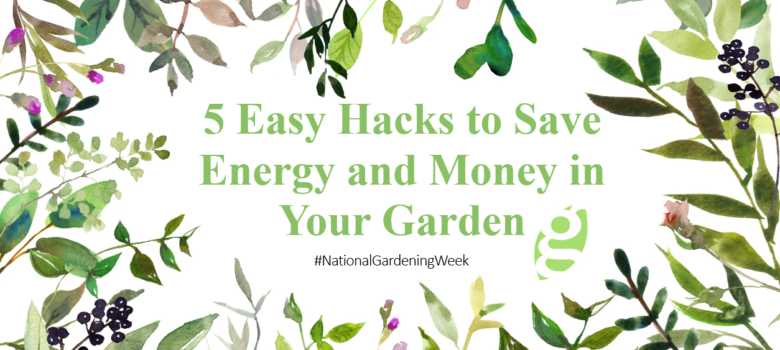
1. Use Water Butts
Water butts collect free, natural rainwater from your roof and guttering system to utilise in a host of ways. Channelling and storing rainfall is a great way to make the most of your environment, save on water bills, and maximise the potential of your garden. Rainwater is much better for your plants anyway – full of minerals and free of chemical treatments!
2. Start Composting
A composter is essentially a store where you can put all your organic waste to help speed up the composting process, although you can opt for more advanced composters that speed up the composting process by aeration. Almost any organic material can be turned into compost, but the best rule to follow is to add two parts of ‘brown’ waste (rich in carbon) like paper, wood chips and dried leaves, to every one part of ‘green’ waste like grass clippings and food scraps. Most things can be composted though, so things like cotton and wool, teabags and pet hair can all be used – there is no need to throw it away. This will save you from buying in-expensive compost, while also cutting down on your waste and helping the environment.
3. Ditch the Plastic Flower Pots
Disposable plastic has been in the news a lot recently; people are finally waking up to the fact that it’s putting an enormous strain on the environment, and encouraging an energy-hungry throwaway attitude to our resources. Instead of shelling out for seed trays or planting pots, try making your own seed-starter pots from an old newspaper. It takes just a few minutes, and once your little baby plant is ready to spread its roots and migrate to the flowerbed then you can plant the entire thing whole. Easier, cheaper and much more environmentally friendly than plastic pots.
 4. Use Your Washing Line
4. Use Your Washing Line
Now that the weather is improving you’re running out of excuses not to hang-dry your clothes. That’s no bad thing! Tumble dryers gobble energy like Pacman gobbles ghosts, and that energy use adds up to big bills and an even bigger carbon footprint. Using the drying power of the sun and wind costs nothing at all and has no negative impact on the environment. In fact, the sunlight offers UV sanitation, providing an extra level of cleaning without the use of any chemicals.
5. Grow Your Own Food
Even when buying local produce, the energy cost of mass production and transport for food items that could be grown at home is startling. To avoid this, consider growing your own! We may not all be Alan Titchmarsh, but a tomato plant here or a lettuce there can help reduce global energy usage and save you some cash in the process. A small vegetable patch can provide a significant yield and make a big impact on your food costs, as well as giving you fresh, organic produce right on your doorstep.
Think we missed something? Do you have a different opinion?
Comment below to get your voice heard…












No Comments yet! Be the first one.